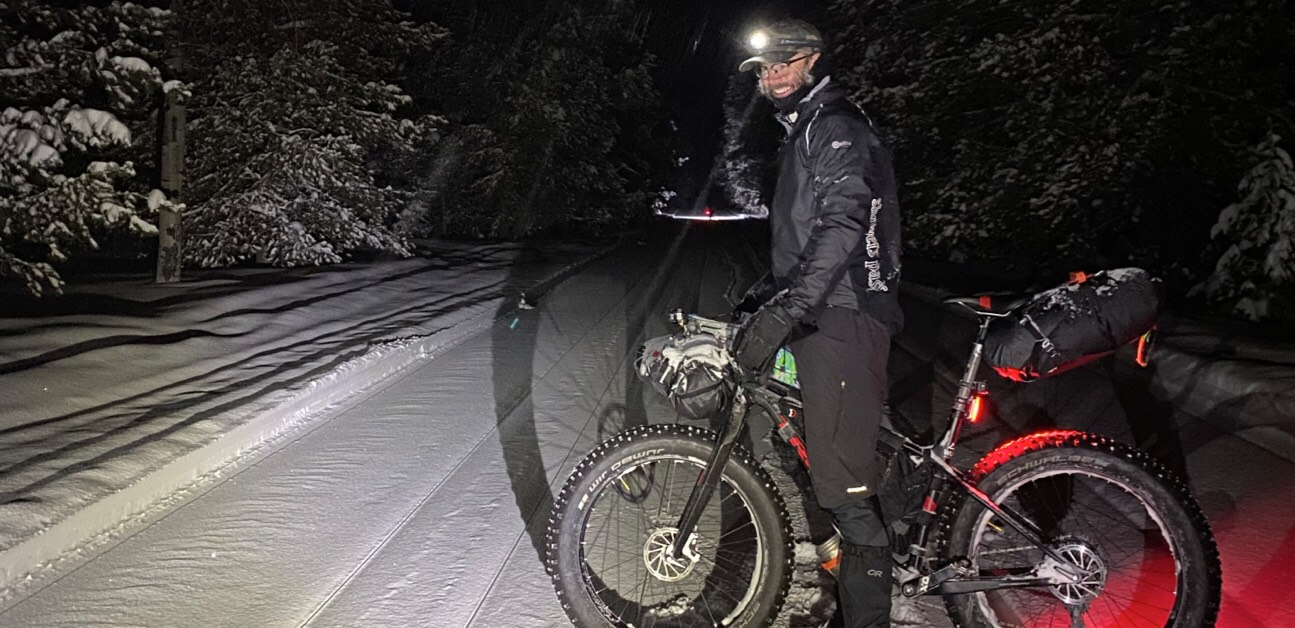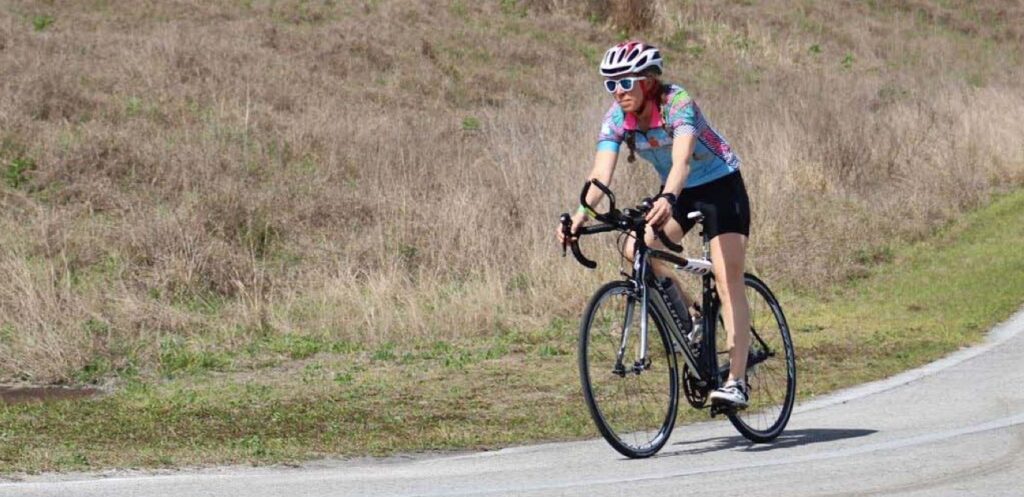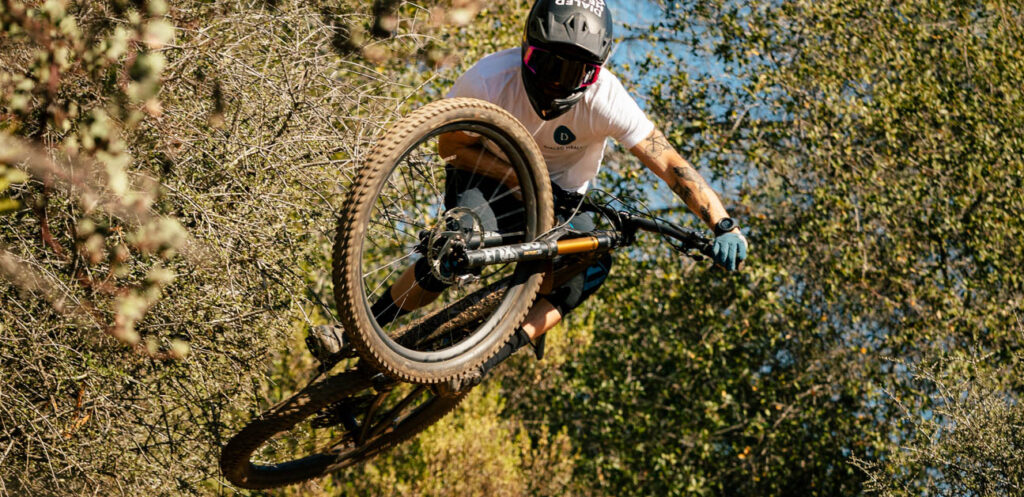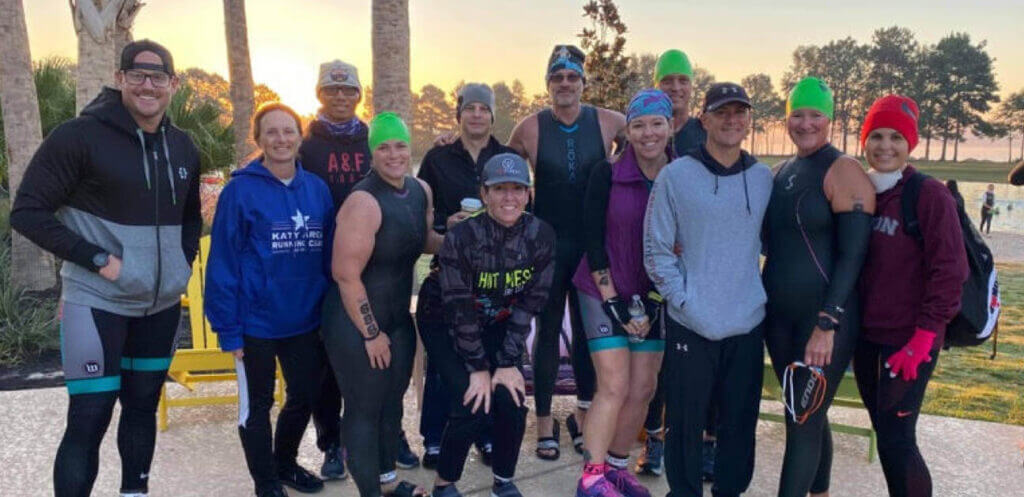Strength Training and Ultra Endurance Fat Bike Racing With Art O’Connor

With over 30 years of bike racing under his belt, Art O’Connor has been a pro mountain bike racer, a frequent amateur competitor in road, gravel, and cyclocross events, and a renowned professional strength training coach to top athletes. And never content to sit still, Art recently used TrainerRoad to build fitness for an ultra-endurance fat bike race in extreme, sub-zero conditions. Art’s hard-earned wisdom and experience can help make you faster, whatever your chosen event.
Share your success story and tell us how TrainerRoad helped you reach your goals.
Art’s Background in Cycling and Strength Training
Art O’Connor’s journey with cycling began humbly, with a mistake-laden mountain bike race in 1988. From this inauspicious beginning, his exercise physiology degree led to self-coaching and rapid improvement, and Art got his professional MTB racing license in 1991. While he never finished within the top 10 at a major pro event, he developed a lasting passion for the sport, which led to a career working with top athletes.
The other ingredient in that career is Art’s experience with strength training. As a tall, skinny kid growing up in rural Maine, Art was introduced to weight lifting in 8th grade by his skiing coach. Much like cycling would a few years later, weight lifting became a lifelong passion, and Art considers it the secret advantage behind his success in multiple sports.
Art started coaching other athletes in strength training soon after graduating college in 1990 and has been a full-time strength and conditioning coach since 2011. He currently coaches a number of well-known pro and elite cyclists.
How Strength Training Benefits Cyclists
Art doesn’t look like a stereotypical bodybuilder, because big muscles aren’t his goal in the weight room. To Art, strength training is intimately connected with sport-specific skills training, designed to make an athlete stronger for their chosen discipline.
For cyclists, those skills include bracing and stabilizing, as well as repeatedly recruiting as much muscle as possible. And since cyclists’ bodies are constantly under stress from on-bike workouts, Art doesn’t want his athletes to leave the gym exhausted. Instead, carefully chosen exercises develop useful strengths and movement patterns, with low reps of heavy weights.
Above all, good form is essential and is prioritized in every lift. Art thinks of it a bit like the concept of ongoing “practice” in yoga.
“You’re striving for that perfect rep every time, and every time you go to the gym it’s a chance for you to work on that skill of being strong,” he explains.
Ultra Endurance Fat Bike Racing
A few years ago, Art started experimenting with ultra-endurance fat bike racing. These winter events take place in frigid conditions on snowy, remote backcountry courses. Combining elements of adventure racing, backpacking, and mountain biking, they demand a mix of cycling and wilderness survival skills, and offer some truly unique logistical and physical challenges.
Art had a few short events under his belt before attempting the 200km Fat Pursuit in 2019. Fat Pursuit takes place in the Yellowstone wilderness and can take more than 20 hours to complete. Competitors are required to boil water at some point during the event to prove their backcountry survival skills and are also required to carry camping equipment in case they need to stay on course overnight.
After 12 hours in blizzard conditions with a dead GPS and frozen bottles, Art threw in the towel. Frustration turned to motivation, and he immediately committed himself to completing the event the following year. It would take careful planning, better equipment, and above all, smart training.
Training For Fat Pursuit
While an extraordinarily long event is inevitably ridden at low-intensity, Art’s single-minded goal in training was to raise his FTP. His reasoning was twofold- first, a rising tide of fitness lifts all boats. In other words, the higher his aerobic capacity, the faster Art would be able to ride while maintaining a sustainable pace.
The second motivation related to the particulars of the event itself. On a snow-covered course, a certain baseline power is required just to stay in motion. Additionally, a fully-laden fat bike weighs at least 60 lb. This combination of resistance and weight meant there was a natural limit to how easily Art could pace the event, making good aerobic fitness an absolute necessity.
Despite the enormous time-demand of race day, Art’s training time is limited. For this reason, he used mid-volume training plans to prepare, beginning with Sweet Spot Base and following through Sustained Power Build. Additionally, Art knew from years of experience that his body responded well to intensity, so he replaced one of his scheduled tempo rides each week with a VO2 max workout.
A back injury in November made riding outside impossible, so Art did all of his remaining training indoors on his Wahoo Kickr. By the time the event rolled around in January, he was confident he had the fitness needed to succeed.
Adaptive Training
Get the right workout, every time with training that adapts to you.
Check Out TrainerRoadGear and pacing
The final challenges at Fat Pursuit were pacing and equipment, and Art learned from his prior year’s mistakes on both accounts. Clothing-wise, he wore multiple layers of thin, wicking fabric, to prevent overheating and moisture buildup while staying warm in temperatures as low as -11F. He used a temperature-resistant white gas camp stove to complete the required water boil, and powered his GPS head unit with a battery pack kept warm inside his clothing. Art wore a hydration pack under his jacket, and brought a home-made trail mix free of raisins, since a frozen raisin broke his tooth during last year’s event.
Art doesn’t have a power meter on his fat bike, so he paced his ride using RPE, paying close attention to his breathing and heart rate. The strategy worked. After more than 21 hours, Art finished second out of the 20 riders who started the event.
Lessons Learned
The unusual challenge of Fat Pursuit is just one of the many obstacles Art has tackled in his long cycling career, and his simple advice for other riders comes from years of trial and error.
“As far as training, just get on a plan,” he says. “There’s nothing wrong with just riding, but if you have performance goals, train. Get on Plan Builder and just do it.”


